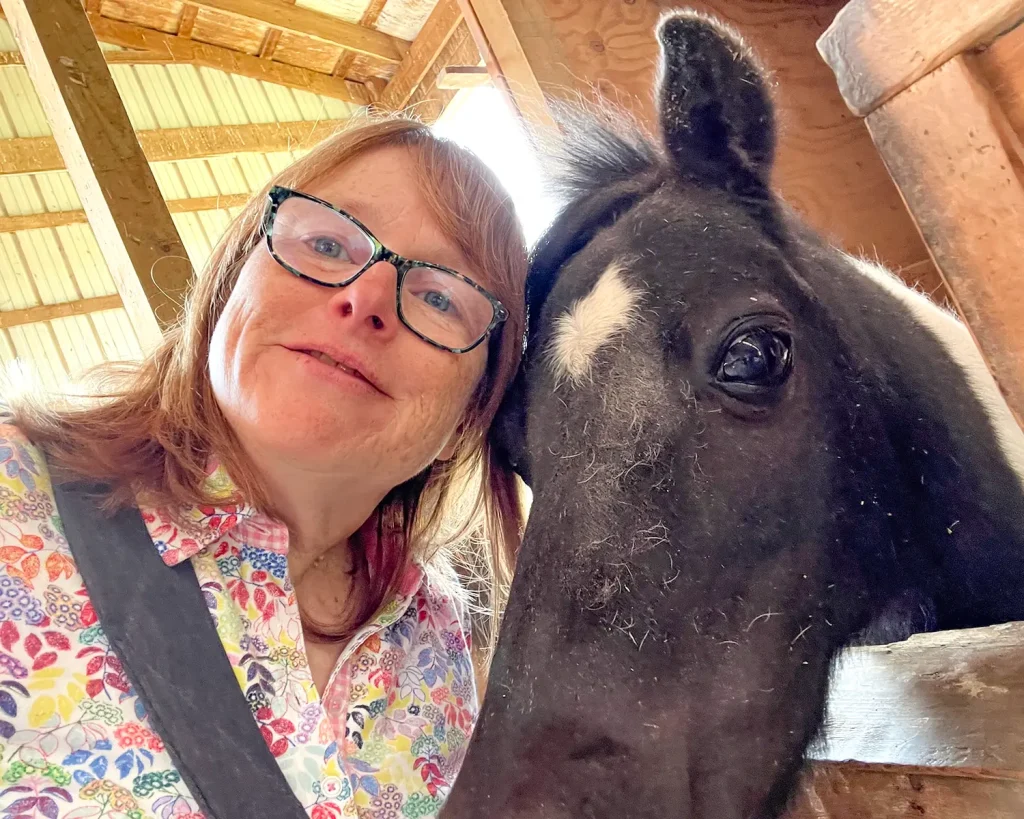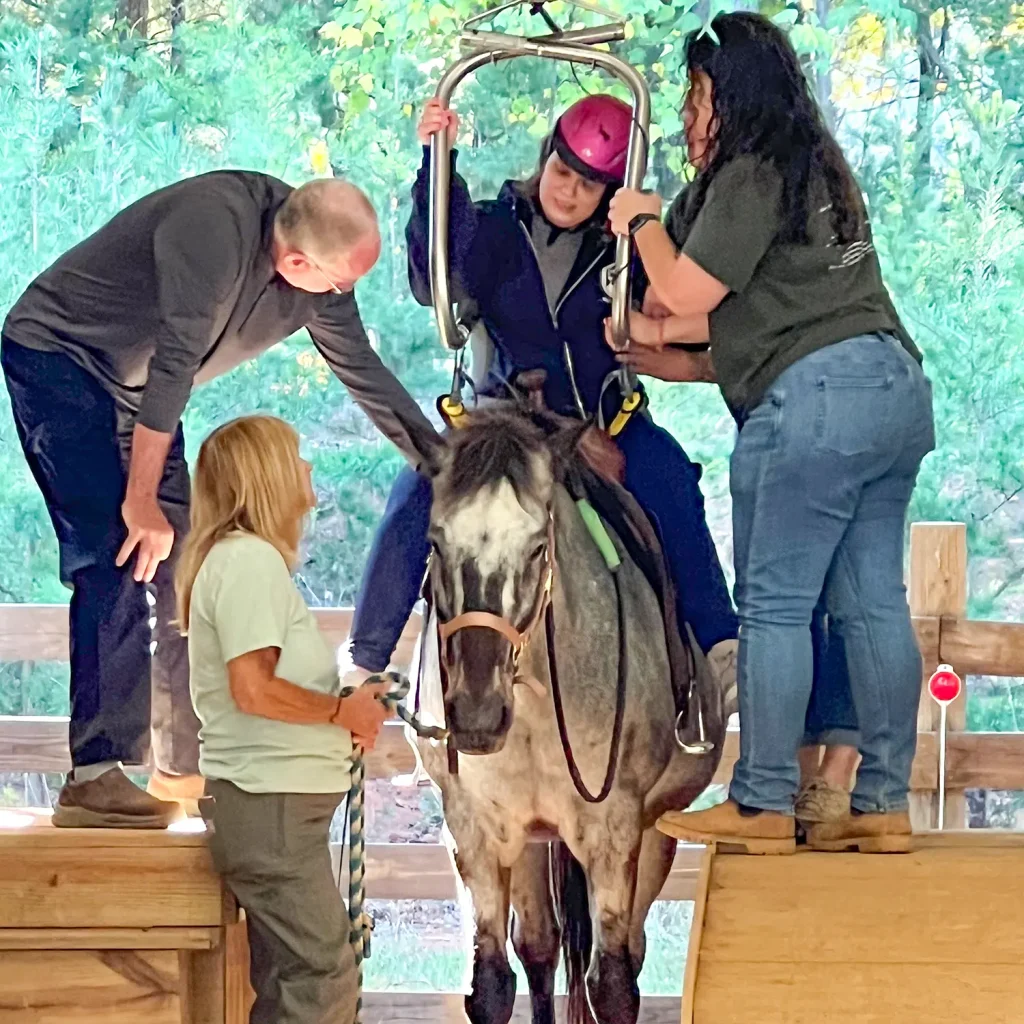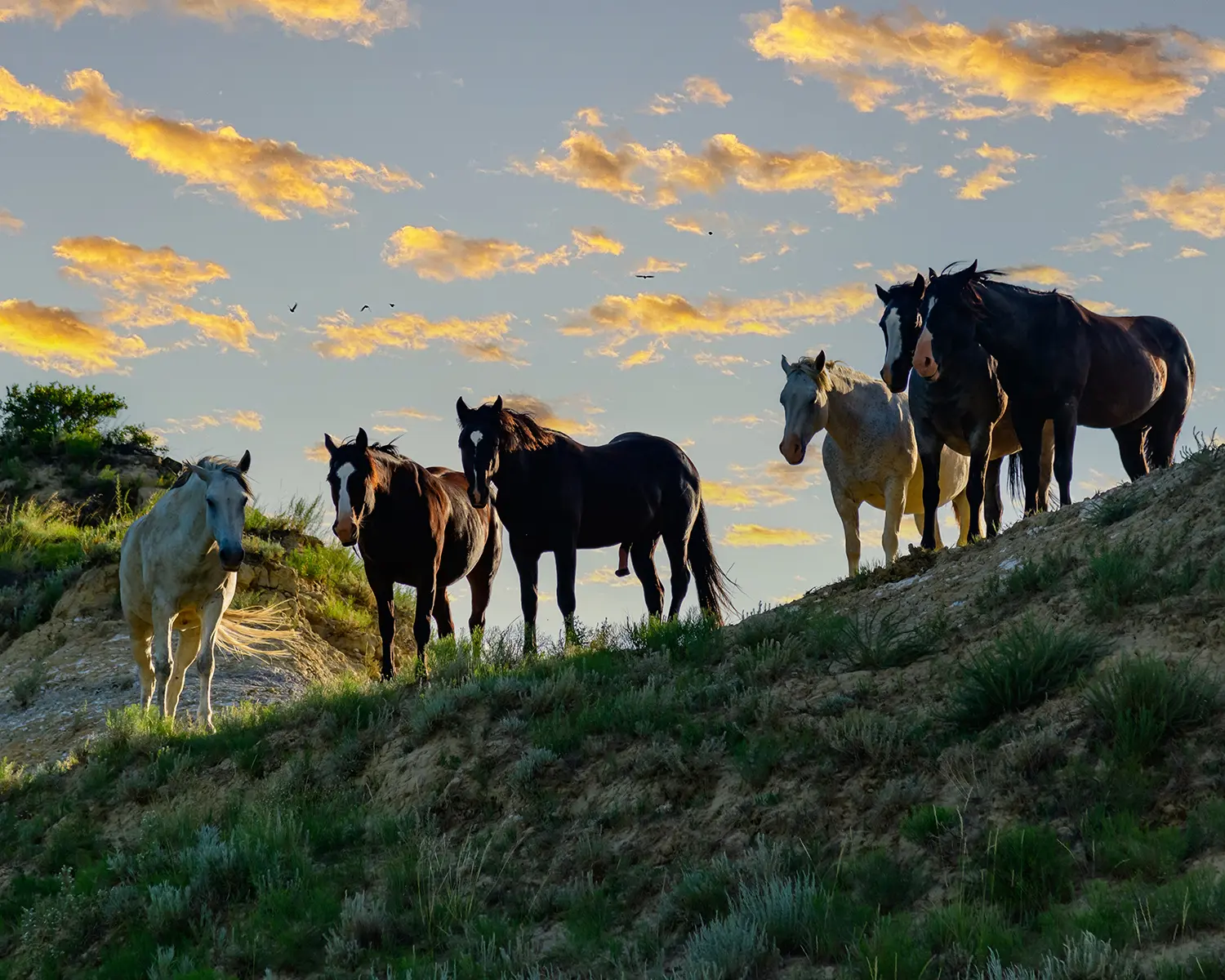Awareness of their environment, sensitivity to other creatures, and instincts born out of life in the wild make horses a perfect fit for therapeutic interaction and assistance.
“There is something about the outside of a horse that is good for the inside of a man,” said Winston Churchill, capturing the special relationship between horse and rider. It’s a relationship built on instinct, mutual respect, and cooperation.
But what about those with disabilities? It’s pretty much the same and it’s a big part of how horses facilitate therapeutic experiences.
Equine-Assisted Services use horsemanship and riding as catalysts in treating physical and emotional challenges and spiritual healing work.
Horses and staff partner with clients who are experiencing conditions of muscular dysfunction, as well as PTSD, trauma, and neurodiverse spectrum disorders.

Me with “the always amiable “Skunk,” my horse pal at Medina Riding and Driving Academy in Medina, Ohio.
With a horse, no one is ever judged, shamed, or embarrassed
This ability of horses to connect with riders of all abilities is found in a horse’s genetics and instincts – instilled from being prey animals in the wild. They must be keenly aware of their surroundings to avoid getting eaten. Herds protect themselves and each other by alerting and warning of possible danger.
In the non-wild world, this awareness of the energy around them makes horses ideal for therapeutic learning. The energy between horse and rider can channel therapeutic change that can be reached without judgment.
“With a horse, no one is ever judged, shamed, or embarrassed,” reads the website of Beachwood Integrative Horse Therapy Centers.
“In my experience, horses are unique in therapy because they are prey animals,” said therapist Amanda Sullivan. “This causes them to tune in to the changes in emotions and energy to stay safe and survive, much like big biofeedback machines for the people they interact with.”
Sullivan has worked with Riverwood Therapeutic Riding Center in Tobaccoville, NC, and offers therapeutic retreats at other farms. She suggests that horses can sense your authenticity, too.
“If you aren’t honest with your emotions and are not being true to yourself, horses aren’t comfortable interacting with you,” said Sullivan. “So, to have a meaningful relationship with the horses, you first must have one with yourself. This is why I love working with horses. You know you are going to get a genuine connection.”

Equine staff member, “Trader,” waits patiently for rider Libbie to be lifted into the saddle by Richard, Sarah, and Nikita at HorsePower. PHOTO: Sally Shipley.
Horses helping people
Centers focusing on behavioral health issues have equine specialists, farm/barn staff, and mental health and addiction specialists, with clients working on trust, safety, and resilience.
The centers that work with physical disabilities do not have staff therapists but teachers who are experienced in horsemanship and have training in assisting the mobility and behavior of riders. Therapists can come in to work with specific clients but are not part of the actual staff of these centers. Referrals for adjunctive therapy/learning can come from physicians, physical or occupational therapists, or counselors. Some clients are self-referred by caregiving families.
At HorsePower Therapeutic Learning Center in High Point, NC, horseback riding (specifically at a slow, rhythmic pace) is provided for mobility issues because it imitates gait requirements for humans to walk. Sitting in the saddle, a client will get the sensation of walking themselves while building up the muscles and balance used in ambulating.
Imagine the excitement for a non-ambulatory client when they experience independent forward movement for the first time in their life – it provides freedom of mobility, balance, and the building of core strength.
By learning to command “whoa” or “walk on” and the horse then obeying the commands, clients gain confidence, self-esteem, and trust. A non-ambulatory client must depend on volunteers to keep them safe and stable while atop a 1,000+ lb. animal five or more feet off the ground. Conquering that experience by a rider is an exercise in courage, to be sure.
That’s where the bond between horse and rider forms. The horse will remember its responsibility for that specific rider the next time.
The unique value of Equine-Assisted Learning
With the therapeutic potential of riding, it’s disappointing that Equine-Assisted Learning services are often not covered by insurance, except for some mental health benefits for therapy-forward services, which would have to be listed as the type of therapy with the addition of “with the use of a horse.” Many centers are supported through grants, donations, sponsorships, or loans of horses and are governed by a board of directors. They rely on a small, paid staff and a large contingent of volunteers. They can use proceeds from different functions they present to the community.
Becoming a volunteer at HorsePower Therapeutic Learning Center has given me firsthand knowledge of how diligent (and happy!) staff and volunteers are caring for their clientele and their human and equine coworkers.
In an upcoming blog, I will introduce readers to the HorsePower experience. I am excited for you to see what this center offers the community through client and equine services, advocacy, and opportunity.

